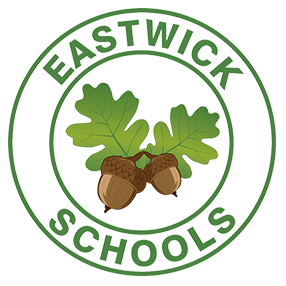Computing
National Curriculum Purpose of Study
A high-quality computing education equips pupils to use computational thinking and creativity to understand and change the world. Computing has deep links with mathematics, science, and design and technology, and provides insights into both natural and artificial systems. The core of computing is computer science, in which pupils are taught the principles of information and computation, how digital systems work, and how to put this knowledge to use through programming. Building on this knowledge and understanding, pupils are equipped to use information technology to create programs, systems and a range of content. Computing also ensures that pupils become digitally literate – able to use, and express themselves and develop their ideas through, information and communication technology – at a level suitable for the future workplace and as active participants in a digital world.
National Curriculum Aims
The national curriculum for computing aims to ensure that all pupils:
- can understand and apply the fundamental principles and concepts of computer science, including abstraction, logic, algorithms and data representation
- can analyse problems in computational terms, and have repeated practical experience of writing computer programs in order to solve such problems
- can evaluate and apply information technology, including new or unfamiliar technologies, analytically to solve problems
- are responsible, competent, confident and creative users of information and communication technology.
Computing at Eastwick - Intent
The computing curriculum at Eastwick meets the requirements of the National Curriculum and our Curriculum Ethos. It prepares children to be ‘Ready for Everything’ in their futures in terms of:
- Success in the next stage of their education and beyond: by providing knowledge of computer science, information technology and digital literacy
- their ability to navigate life’s personal Challenge: by equipping children with the knowledge of how to keep themselves safe in the digital world
- understanding their place in communities at global, national and local levels and seize the Opportunity of the future: by learning and demonstrating the school values in how they collaborate in their learning; by learning how to use computational thinking and creativity to understand and change the world
Computing at Eastwick - Implementation
- In Reception, pupils are taught elements of online safety.
- Our curriculum in Years 1-6 uses the Kapow Computing scheme of work. In addition, resources from CEOP Education are used to teach aspects of online safety.
- Knowledge is built progressively throughout Key Stages 1 and 2. For each unit, the following is identified:
- 'knowledge end points' ('I know (that)...' or 'I know how to...' outcomes that children are expected to master by the end of the unit)
- ‘substantive knowledge strands’ (key themes and vocabulary that form the basis of children’s mental mind maps or schemas, which enable pupils to recall and build on prior knowledge)
- 'disciplinary knowledge', which is taught implicitly and enables children to ‘walk in the expert’s shoes’.
- Pupils revisit the substantive knowledge strands as they progress through the school. Each time a strand is revisited, prior knowledge is recalled before it is covered with greater complexity or in a different context, therefore increasing children’s breadth and depth of knowledge.
- Across Key Stages 1 and 2, pupils are taught seven units per year (including an online safety unit which may be taught across the school year).
- Provision is made for all pupils, including those with SEND, by teachers providing suitable access arrangements as part of their 'Quality First Teaching' offer, adapting resources and activities to meet individual children’s needs.
- Online safety is taught specifically in every year group. Additionally, opportunities to teach aspects of online safety are taken by teachers as they arise. Online safety also forms part of our PSHE curriculum.
- Children use a range of resources to enable their learning, such MS Windows-based laptops, Bee-Bots and BBC Micro:bits.
Curriculum Progression
Please visit the Subject Progression Documents page for details of curriculum progression in knowledge end points, substantive knowledge strands and disciplinary knowledge from Reception to Year 6.
Computing at Eastwick - Impact
- The computing subject leader, in conjunction with senior leaders and others, carries out monitoring of provision. This takes the form of pupil voice, lesson observation and work scrutiny.
- We know that teaching is impactful on children’s progress when:
- children demonstrate that they have built progressively complex ‘schemas’ in their long-term memory for each of the substantive knowledge strands. This is demonstrated when they can recall prior knowledge and learning, and master the knowledge in each progressive step in the curriculum because they have mastered the knowledge gained in previous steps and built on it
- children show increasing mastery of disciplinary knowledge as they progress through the curriculum
- children therefore show that they 'know more and remember more' after each unit of learning.

